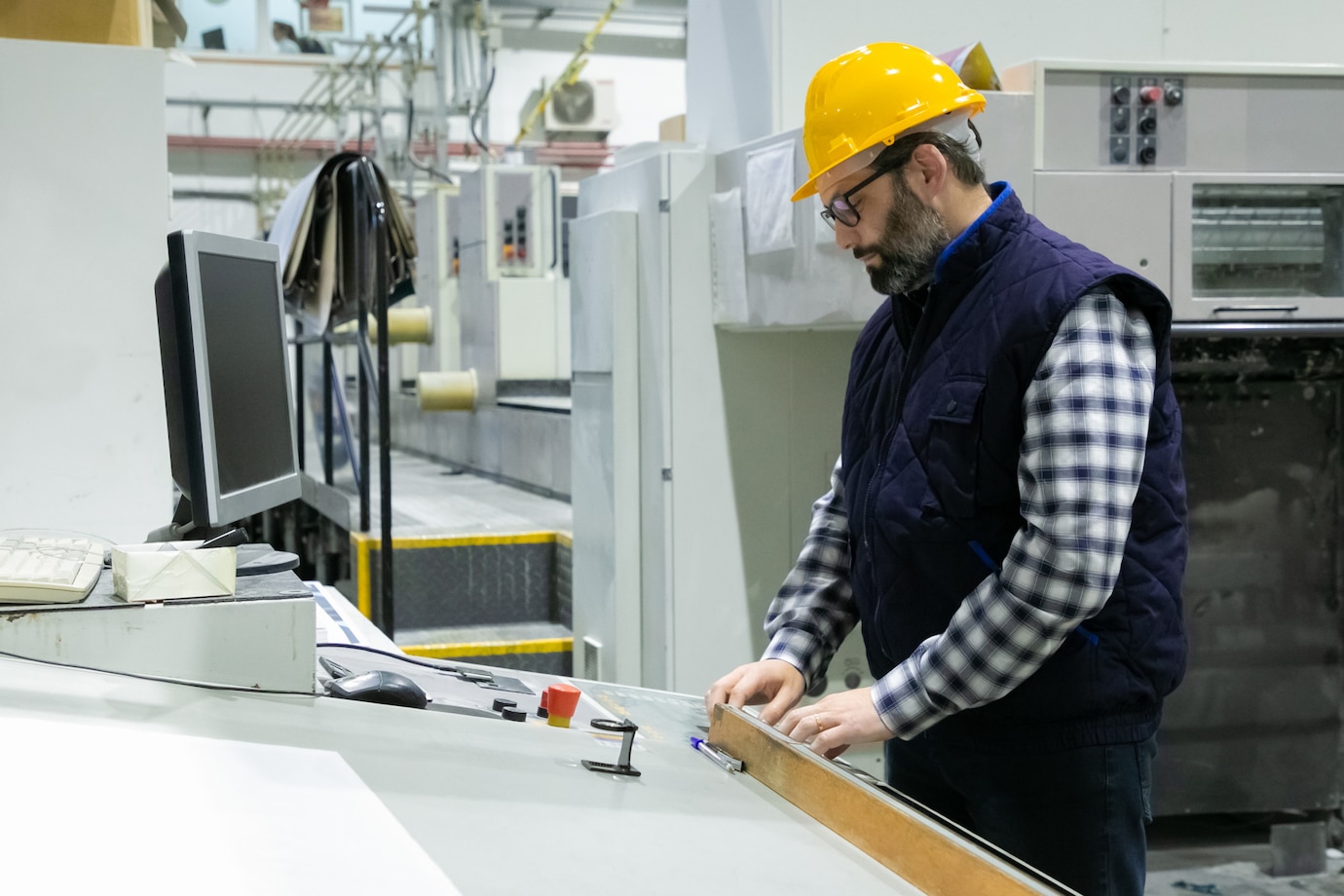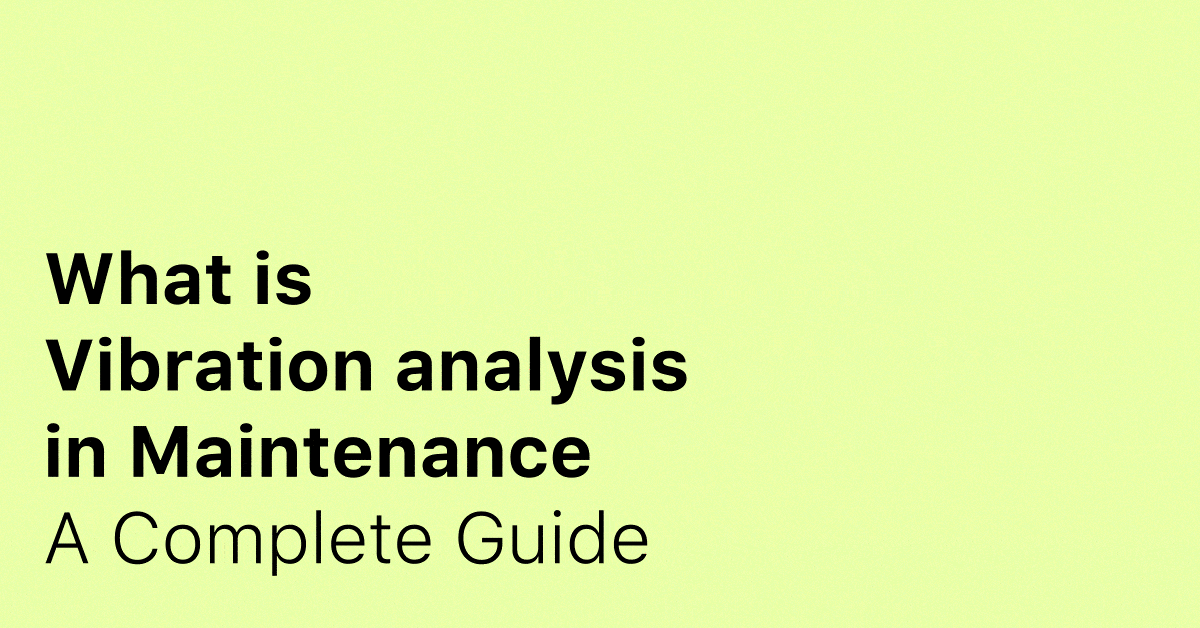A common question that facility managers come across is: “What is vibration analysis in maintenance.” Also, you might wonder “why is vibration analysis important” when it comes to keeping assets up and running round the year.
In this article we will answer these questions and a few more. We will go through concepts like advanced vibration analysis as well as equipment and techniques used. Finally, we will look at what’s included in a vibration analysis report.
What is Vibration Analysis in Maintenance?

Vibration analysis in maintenance is a method of detecting early signs of machine failure or wear and tear. Vibration analysis aids in predictive maintenance and reactive maintenance of the equipment helping with pre-planning maintenance tasks thereby avoiding downtime due to machine breakdown.
Data is collected by the vibration analysis equipment attached to the machinery. This helps in repairing or replacing parts that have been identified as faulty. This is the reason why vibration analysis is important.
Professionals having vibration analysis training can quickly identify equipment failure modes. They also prepare vibration analysis reports and send it to management for review and schedule a maintenance job.
Predictive Maintenance Vibration Analysis
We have now answered the main question: what is vibration analysis in maintenance. Now let’s look at why it is becoming so popular.
Traditionally, maintenance managers used to implement corrective maintenance techniques, whereby the technicians would wait until the machine breaks down. A work order would then be created to repair or replace the faulty equipment or part.
This caused businesses millions of dollars in downtime as a result. Operation staff would sit idle until the machine is repaired. This eventually resulted in products not reaching the market on time, denting business revenue.
Businesses have now begun to understand “what is vibration analysis in maintenance” and its importance. Hence, today, managers have started to implement predictive maintenance rather than corrective maintenance.
Predictive maintenance vibration analysis is a proactive approach to maintenance. It effectively identifies the issue that might happen based on the condition of the asset.
In this approach, sensors are connected to the asset and data is collected. Next baselines are identified and parameters are set. The asset runs as usual. If the sensor detects a performance anomaly, a work order is created and maintenance is performed.
Predictive maintenance vibration analysis provides several benefits including:
- Reduction in unplanned downtime
- Improved equipment performance
- Root cause analysis for effective maintenance
- Reduced maintenance cost
- Enhanced product quality
- Enhance worker safety
Different Kinds of Vibration Analysis Services
Certified analysts work to create an effective vibration analysis program tailored to meet the specific needs of a client.
There are different types of vibration analysis services based on specific industry needs. Some of these include the following:
Rotating Equipment Diagnostics

Routine Condition Monitoring

Acceptance Testing

How Does Vibration Analysis Work
By now you would have understood what is vibration analysis in maintenance and its role in facility management.
Let’s now take a look at how vibration analysis works.
Vibration analysis has 4 main steps:
- It begins with data collection through the sensors attached to the machinery or equipment.
- Next a, baseline is developed by collecting data from a perfectly operating machine. This data is used to compare the performance of both machines and look for variations.
- Vibration data is then stored in order to make comparisons based on historical data using an online monitoring system.
- Vibration data is then analysed and compared to look for anomalies or defects. If a defect is detected, a maintenance work order is created and work is carried out to prevent breakdown.
What is Included in a Vibration Analysis Report
A vibration analysis report is an important document that effectively records the entire fault-finding incident and how it was handled.
A vibration analysis report is divided into 4 sections:
- General: This section includes the report reference, introduction, measurement date and analysis date. Briefly explain the context under which the asset inspection was performed, when the vibration data was collected and the analysis made.
- Measurements: Write the operating conditions under which the asset was performing when the measurements were taken. Mention any manual measurements taken. Explain what were the measurement points where the sensors were placed. Finally state the measurement data and its description.
- Analysis: Here you need to add the faults you have diagnosed through the vibration analysis. You will also set a status for each such as acceptable, alert, danger etc. Additionally, mention how the vibration results compare to earlier measurements and present a diagnosis of the asset condition. Finally come up with recommendations to fix it.
- Publication: Set the moderation state of the report. Add names of the personnel who made the report and attach any documents related to it.
Vibration Analysis Equipment and Tools
Vibration analysis equipment and tools have come a long way from bulky machines to handheld devices. These can be connected to a vibration analysis software or a maintenance management app.
Today, the equipment involves simply installing portable or mountable vibration equipment sensors. These are most commonly sensors detecting movement, some of which include the following:
- Proximity probes
- Piezoelectric accelerometers
- Laser Doppler vibrometers, and
- Microelectromechanical sensors (MEMS)
There are other sensors as well based on the purpose behind carrying out a vibration analysis.
Pros and Cons of Vibration Analysis
Vibration analysis is one of the most popular approaches aiding predictive maintenance managers. Managers in charge of keeping the facility’s equipment and machinery up and running, are benefiting from this highly reliable approach.
Benefits of Vibration Analysis
- It is one of the most reliable approaches to proactively identify and fix potential issues with machinery.
- Data collection does not need technical knowledge.
- It is easy to create a portable collection path.
- Can be used to detect various types of faults in addition to bearing defects.
Drawbacks of Vibration Analysis
- An initial set up is required
- Vibration analysis training needs to be undertaken by the individuals responsible for carrying it out.
- Bearings that have already failed are not easy to detect.
Vibration analysis benefits far outweigh the drawbacks and hence it has become a highly preferred maintenance method.
Conclusion
Vibration analysis is a great predictive maintenance method. It allows facility maintenance managers to identify issues before they turn into actual problems. Vibration analysis when done right can save your business millions of dollars in downtime, product delays, worker idle time, safety hazards and much more.
With this we wrap up our topic of “what is vibration analysis in maintenance.” We now leave you with the most important question: Is vibration analysis the right predictive maintenance method for your business? What other approaches have you tried?
If you’re interested in finding out how other kinds of software can help your maintenance team, check out i4T Maintenance or get in touch with us to learn more.
Hot off the press!

With our cutting-edge technology and in-depth knowledge of how the Field Service Management sector operates, the i4T Global Team loves to share industry insights to help streamline your business processes and generate new leads. We are driven by innovation and are passionate about delivering solutions that are transparent, compliant, efficient and safe for all stakeholders and across all touch points.




